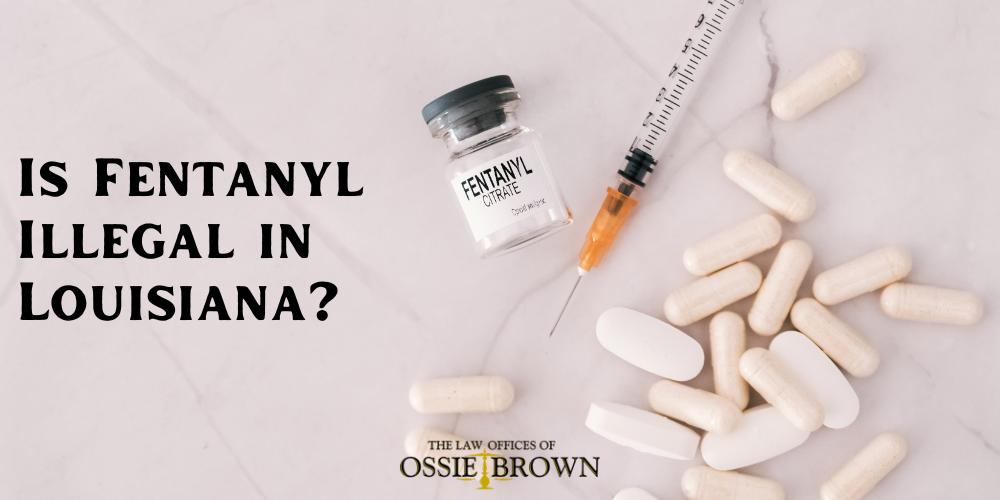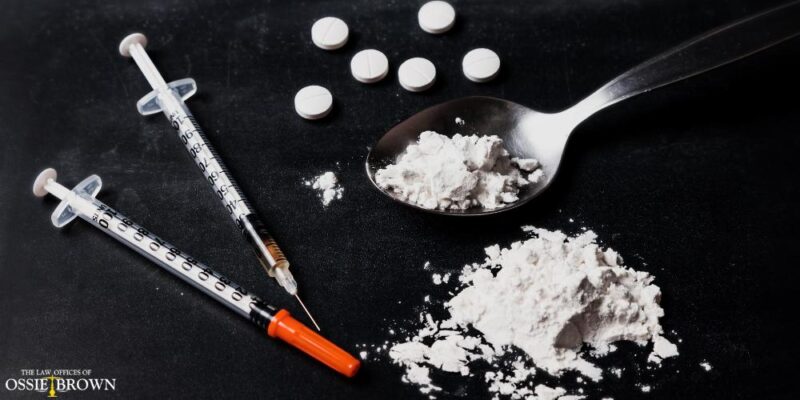Fentanyl overdose deaths have significantly increased over the last decade. Of the 91,800 Americans who have overdosed, 75% were caused by a synthetic opioid, like morphine and oxycodone.
Synthetic opioids come in different forms and can be prescribed to patients with severe pain. However, one synthetic opioid, pharmaceutical Fentanyl, like morphine, is rarely prescribed outside of hospital settings. Typically only injury and cancer patients with chronic pain and major surgery patients will have a prescription for these dangerous opioids. A pharmaceutical Fentanyl dose as low as 2 milligrams can be fatal because it is estimated to be 50 to 100 times stronger than morphine and heroin.
To help decrease the number of Louisiana overdose deaths related to controlled substances like fentanyl, morphine, heroin, and other drugs, Governor John Bel Edwards passed a Louisiana law specifically regarding penalties for synthetic opioid crimes. Millie’s Law in Louisiana also addresses these issues.
If you’ve been charged with possession of a synthetic opioid or other drugs considered illegal in Louisiana, call 225-343-1111 for a free consultation with an experienced Baton Rouge drug possession attorney.
Why is Fentanyl So Dangerous, According to The Drug Enforcement Administration
Pharmaceutical fentanyl is a synthetic opioid prescribed to patients with severe pain, cancer, or for major surgery patients. Without a prescription, it is considered a Schedule II controlled substance. According to the DEA, this synthetic opioid carries a strong risk of addiction and is approximately 50 times stronger than heroin and approximately 100 times stronger than morphine.
There are two main types of this synthetic opioid: pharmaceutical fentanyl and illicitly manufactured fentanyl. Pharmaceutical fentanyl is a prescription that post-surgery or cancer patients receive for severe pain or chronic pain relief.
Meanwhile, illicitly manufactured fentanyl, like oxycodone, heroin, morphine, and other prescription drugs commonly used for severe pain relief, is often distributed illegally on the black market and drastically increases the risk of respiratory depression.
Like other opioids, dealers may lace the synthetic opioid, Fentanyl, with other illicit drugs – like heroin and methamphetamine – to make its effects more potent. These illicit drugs are often manufactured in Mexico and are linked to thousands of fatal and nonfatal overdoses annually.
Fentanyl Street Names
Common street names for illicitly manufactured fentanyl include Dance Fever, China Girl, China White, China Town, Great Bear, He-Man, and Poison.
- Dance Fever: refers to the effects others can see when someone is overdosing.
- China Girl/China White: These terms refer to fentanyl’s similarity to heroin, which is often imported from Asia. Historically, “China White” was a term used for high-purity heroin.
- China Town: This is another reference to fentanyl’s origins in Asia, similar to heroin. Being a synthetic opioid more potent than heroin, it inherited similar street names.
- Great Bear: This could be a derivative of Pablo Escobar, a black bear that fatally overdosed on cocaine in 1985.
- He-Man: This likely refers to fentanyl’s extreme potency, which is 100 times stronger than morphine and over 50 times stronger than other opioids like morphine or heroin. The reference to “He-Man” alludes to strength and power.
Street names are often used to disguise the drug’s true identity. If you’ve been charged with distributing fentanyl, contact our Baton Rouge drug distribution lawyers for a free consultation.
How Long Does Fentanyl Stay in Your System?
Like other synthetic opioids used for chronic pain relief, fentanyl, a drug up to 100 times stronger than morphine, can stay in your system for 24 to 72 hours, depending on factors like dosage, frequency of use, and individual metabolism. It can be detected in urine for up to three days, in blood for up to 12 hours, and in hair for up to 90 days.
What Does Fentanyl Smell Like?
Fentanyl is typically odorless, making it difficult to detect by smell. It can be mixed with other substances that may carry an odor, but the synthetic opioid itself does not have a distinct scent.
What Color is Fentanyl?
Prescription fentanyl is usually white, but illicit forms of fentanyl can vary in color, ranging from white to blue, pink, or even brown, depending on how it’s mixed or cut with other substances.
What Does Fentanyl Taste Like?
Fentanyl is generally tasteless, though some illicit forms may have a bitter taste due to additives or contaminants laced with the synthetic opioid.
What Does a Fentanyl Overdose Look Like?
Often consumers don’t realize they’ve taken this specific synthetic opioid, as it’s often laced with other drugs. This is why accidental overdose deaths are so common. In fact, the DEA states that only 2 milligrams can be fatal depending on the person’s body weight and tolerance level.
Signs of a Fentanyl Overdose
- Very small pupils
- Respiratory depression (mixing with alcohol increases the risk of respiratory depression)
- Slow and/or weak pulse
- Limpness and weakness in the body
- Losing consciousness and/or falling asleep
- Cold and clammy skin
- Discoloration in the lips and nail beds
- Gurgling or choking sounds
Does Narcan Work on Fentanyll?
Yes, Narcan (naloxone) can work on reversing the effects of a fentanyl overdose, but it may require multiple doses due to the potency the synthetic opioid around 100 times stronger than morphine and over 50 times stronger than heroin.
Additionally, this synthetic opioid causes severe respiratory depression, which can lead to death if not treated quickly. While Narcan is effective in reversing overdoses from substances like prescription opioids and pills, it may take additional resources, including multiple doses, to counteract fentanyl overdose deaths because it binds more strongly to opioid receptors.
What is the New Fentanyl Law in Louisiana?
The possession, distribution, possession with intent to distribute, and manufacturing of all controlled substances is illegal in Louisiana. Governor John Bel Edwards signed legislation specifically regarding the criminal penalties for possessing, distributing, and manufacturing fentanyl in Louisiana.
As of August 1, 2022, anyone who possesses, distributes, or manufactures fentanyl or drugs laced with it, will face up to $50,000 in fines and 40 years in prison with hard labor.
Anyone who knowingly laces misrepresents, or markets a product or drug containing fentanyl will face a maximum of $100,000 fines (or the full street value of the drug, whichever is higher) and up to 43 years in prison with hard labor under the new drug laws in Louisiana.
Potential Defenses for Fentanyl Charges in Louisiana
Our Baton Rouge fentanyl lawyer group can carefully review the details of the fentanyl charges in the Baton Rouge case and help you build a strong defense.
Possible drug crime defenses include illegal search and seizure, the fentanyl isn’t yours, and entrapment.
What is entrapment in Louisiana? If you have evidence to prove that a police officer framed you or induced you to commit a fentanyl-related offense, then we can potentially use this in your favor.
Baton Rouge Fentanyl Defense
If you are facing a fentanyl-related charge in Baton Rouge, you need an aggressive team of criminal defense lawyers on your side. Our Baton Rouge criminal defense attorneys can help you achieve the best case outcome possible while protecting your legal rights. Call 225-343-1111 to schedule a free consultation with a Baton Rouge drug crime lawyer today.



